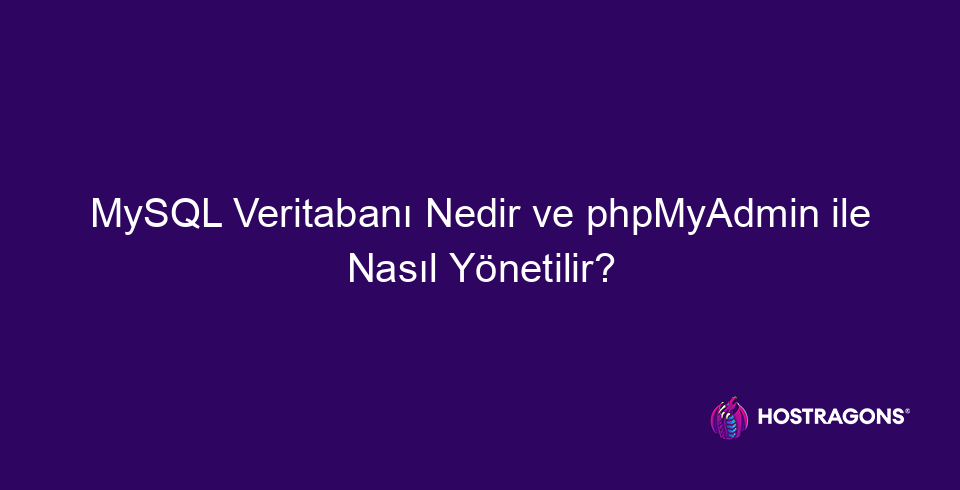Free 1-Year Domain Offer with WordPress GO Service
This section explains the basic concepts of web hosting and related technologies and provides step-by-step guides. It covers topics such as how to register a domain, how to install an SSL certificate, how to back up a database.

What is PHP Memory Limit and How to Increase It?
PHP memory limit, which directly affects the performance of PHP applications, determines the amount of allocated resources. In this blog post, we examine in detail what the PHP memory limit is, how it works, and why it is important. If you are experiencing memory errors in particular, increasing the PHP memory limit may be a solution. The article covers different methods for increasing the PHP memory limit, things to watch out for, and common mistakes. It also focuses on the potential consequences of exceeding the memory limit and methods for resolving memory errors. Our goal is to help you develop more stable and faster applications by providing permanent solutions to memory problems you encounter in your PHP projects. Okay, I am preparing the content in the format you want and in accordance with SEO standards. Here is PHP Memory Limit: Basic...
Continue reading

What is a MySQL Database and How to Manage It with phpMyAdmin?
MySQL Database is a popular open source relational database management system that forms the basis of today's web applications. This blog post explains in detail what MySQL database is, what phpMyAdmin is for, and why it is used. MySQL database configuration steps are explained step by step, while database management steps with phpMyAdmin are shown with examples. Security precautions are also mentioned, and post-installation steps, operations that can be done with phpMyAdmin, common errors, and performance tips are presented. This comprehensive guide contains valuable information for anyone who wants to manage their MySQL database effectively and securely. What is MySQL Database? MySQL database is one of the most popular open source relational database management systems (RDBMS) today....
Continue reading

What is ModSecurity and How to Enable It on Your Web Server?
What is ModSecurity and why is it important to keep your web servers safe? This blog post explains the basic features and benefits of ModSecurity in detail. It shows the necessary steps for installing ModSecurity with a step-by-step guide, explaining how you can increase your web server security. The article also touches on the various modules and areas of use of ModSecurity. It provides practical information such as common mistakes and solutions, things to watch out for during installation, measuring performance improvement and strategies to follow as a result. With this guide, you can significantly increase the security of your web server by activating ModSecurity. What is ModSecurity and Why is it Important? The answer to the question of what is ModSecurity is an open source Web Application Firewall (WAF) that protects web applications from various attacks...
Continue reading

What is Reverse DNS and How to Configure It?
Reverse DNS (RDNS) is the process of mapping an IP address to a domain name, and it’s critical for network security and email deliverability. In this blog post, we take a detailed look at what Reverse DNS is, why it’s important, and how to configure it. We go through the steps of the configuration process, the necessary prerequisites, its benefits, and its drawbacks. We also provide recommended tools for setup, an error resolution guide, frequently asked questions, and how to fix configuration errors. Finally, we cover the benefits of using Reverse DNS and provide actionable advice so you can make your network more secure and efficient. What is Reverse DNS and Why is it Important? Reverse DNS (RDNS) uses an IP address to...
Continue reading

What is Nginx and How is it Different from Apache?
This blog post provides a comprehensive answer to the question of What is Nginx? First, the basic information about Nginx and the reasons for its popularity are discussed. Then, the main differences between Nginx and Apache, the two giants of the web server world, are examined in detail. While Nginx installation steps are conveyed to readers, practical tips are also offered for performance improvements. In addition, Nginx's security and load balancing features are emphasized, and other advantages it provides are discussed. After addressing the important points to consider when using Nginx, the article is completed with a conclusion and application steps. What is Nginx? Basic Information and Definition Nginx is a popular web server, reverse proxy, load...
Continue reading

What is Ruby on Rails and How to Choose Hosting?
This blog post takes an in-depth look at the popular web development framework Ruby on Rails. First, it covers what Ruby on Rails is, its advantages and disadvantages. Then, it touches on the skills required to work on this platform and suitable hosting options. Practical advice for Ruby on Rails projects is provided, along with learning resources and performance optimization methods. It highlights what to look for and common mistakes in building a successful application. Finally, a comprehensive guide to Ruby on Rails is provided along with walkthroughs. What is Ruby On Rails? Ruby on Rails (RoR) is an open-source web application framework used to develop web applications. David Heinemeier Hansson...
Continue reading

What is Node.js Hosting and How to Configure It?
This blog post delves into the concept of Node.js Hosting, covering what you need to know to host your Node.js applications. It covers everything from the basic features of Node.js hosting to why you should choose it, from the criteria for choosing the right provider to the installation requirements. It also covers how to customize your Node.js hosting, how to increase performance, and rapid application development processes. While the frequently asked questions section satisfies your potential curiosities, the key takeaways and steps section provides a practical guide. It is a comprehensive resource that will help you find the ideal hosting solution for your Node.js projects. What is Node.js Hosting? Node.js Hosting is a hosting solution that lets you publish your JavaScript-based applications to the internet. Node.js is especially designed for real-time applications, APIs, and...
Continue reading

What are Prefork and Worker MPM and How to Choose in Apache?
This blog post takes a detailed look at the two important Multiprocessing Modules (MPMs) available in the Apache web server: Prefork and Worker MPMs. It covers what Prefork and Worker are, their key differences, features, advantages, and performance comparisons. It highlights the differences between the process-based architecture of Prefork MPM and the thread-based architecture of Worker MPM. It provides edge case examples and application areas to understand which MPM is more suitable for which scenarios. It provides guidance on important points to consider when choosing an MPM and how to use Apache documentation. In conclusion, it provides a comprehensive guide to help you choose the right MPM for your project needs. Prefork vs Worker Mpm:...
Continue reading

What is Load Time and How to Speed Up Your Website's Loading Time?
Load time is critical to the success of your website and directly impacts the visitor experience. This blog post takes a detailed look at what load time is, why it matters, and the causes of slow load times. It also explains the methods you can use to measure your website’s load time and the benefits of speeding it up. Learn how to improve your website’s performance with optimization methods, mobile-specific optimization strategies, speed analysis tools, and advanced tips. Discover ways to achieve success with a faster load time. What is Load Time and Why Does It Matter? Load Time is the time it takes for all elements of a web page or application (text, images, videos, scripts,...
Continue reading

What is Load Time and How to Speed Up Your Website's Loading Time?
Load time is critical to the success of your website and directly impacts the visitor experience. This blog post takes a detailed look at what load time is, why it matters, and the causes of slow load times. It also explains the methods you can use to measure your website’s load time and the benefits of speeding it up. Learn how to improve your website’s performance with optimization methods, mobile-specific optimization strategies, speed analysis tools, and advanced tips. Discover ways to achieve success with a faster load time. What is Load Time and Why Does It Matter? Load Time is the time it takes for all elements of a web page or application (text, images, videos, scripts,...
Continue reading

